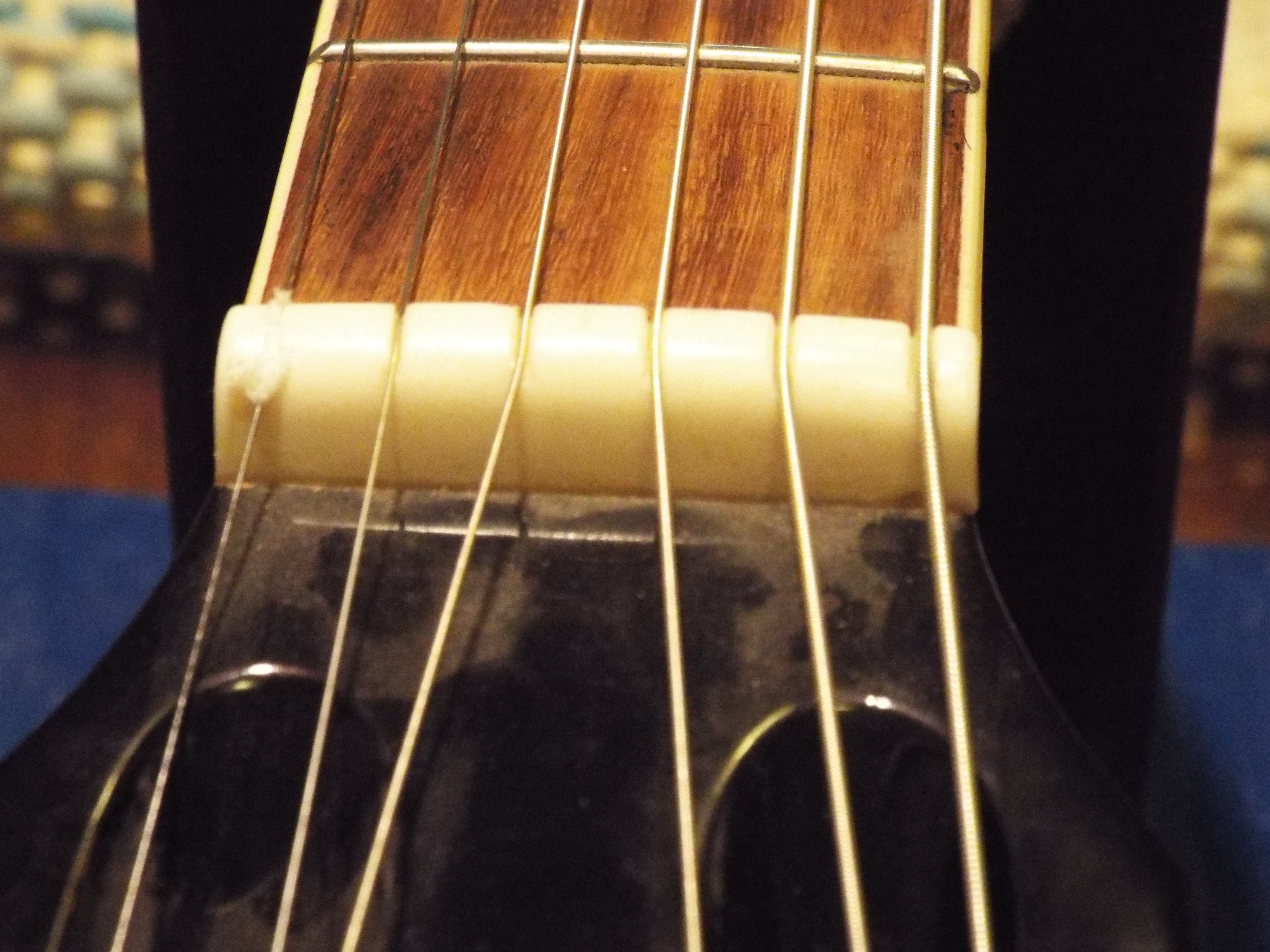Black Beauty came in the other day, looking rather in bad shape, and needing some serious TLC. Its coat too had not been rubbed down in a while and was dusty, dirty and dank, and with enough scratches on it to rechristen it ‘Scratchy’! Of course, The Guitar Garage is just the place for getting all the love and attention that every instrument deserves.
The complaint was that the first string was buzzing, and as the eye automatically went to the problem areas – the saddle and the nut – I was shocked to find tissue paper stuck under the high ‘e’ string, where the saddle should have been. As I looked askance at the owner, he said that the saddle had got chipped in a fall and so he had stuck some tissue to help the string to ride the saddle better!

Apologies for the shaky shot, but I was literally shaking in anger at the presumed ingenuity of the owner.

FOOLED YA!!!! I do have another, clearer shot!
But jokes aside…PLEASE…don’t just try stuff…there’s a load of information available over the internet, rummage through it, you will be none the worse, and what’s more, your instrument will thank you for it.
The strings needed to be changed too, dirty and gunky as they were. So, off came the strings, and as they did, what did I see:

enough DNA reserves that had the ability to map the owner’s family tree!

Does your fretboard resemble this? If it does, when you take off the strings the next time to change them, please make a little effort, take a wad of ‘0000’ steel wool (available at most supermarkets and corner stores) give your fretboard a thorough rub down – right from the 1st fret to the last one on the fretboard extension over the top – and see your frets and fretboard gleam like new.
But as I looked and pondered a formal chastisement of the owner, what did I see, but royal divots, from the very first fretwire (Yes! the space between the fretwires is the ‘fret’, not the wires themselves, as people erroneously refer to them), to say, the 8th or the 9th fret in the area in which the ‘e’ and ‘B’ (the two thinnest) strings would float.

And so, followed the painfully slow and painstaking process of levelling, crowning and polishing the frets to take out the gouges in the fretwire. Two hours later, I was hot, perspiring and panting, but satisfied: the fretwires were done.

But as I went about the chore, what did I see: Do you see it too? Look closer at the high ‘e’ area of the nut. MORE TISSUE PAPER!!!!!!!!

The more I thought, the more I was convinced that this man got his tissue paper for free!
Also, how deeply the strings sat in the nut slot was worrisome to me. Your strings should never sit more than half their circumference in their nut slots – the three thickest ones at least.
Once the fretwires had been taken care of, pulling out the saddle and the nut was a simple process. While the originals were cheap plastic elements, I replaced them with bone elements which would last much longer and lend greater volume and sustain to the instrument.
With some elbow grease put into rubbing down of Black Beauty’s coat, she looked truly resplendent! Wouldn’t you say so?

With a new compensated saddle installed

